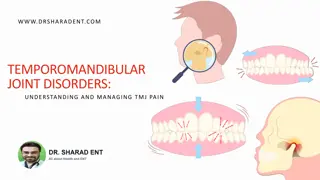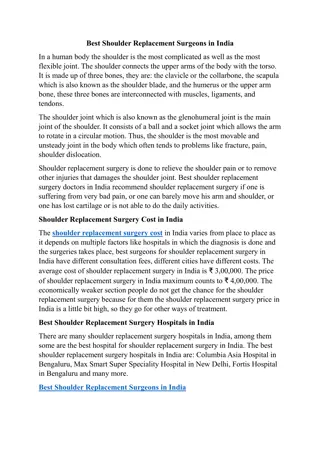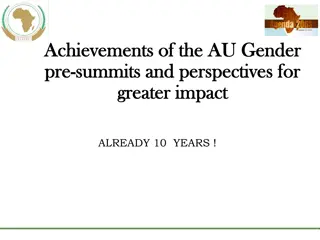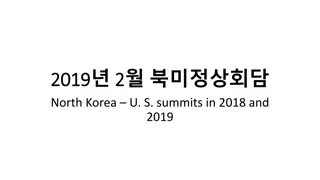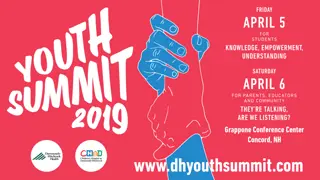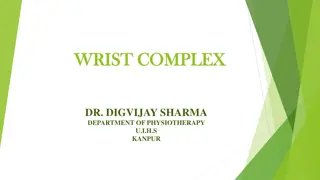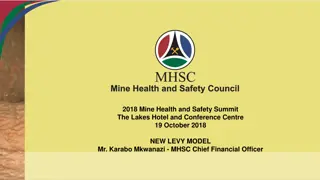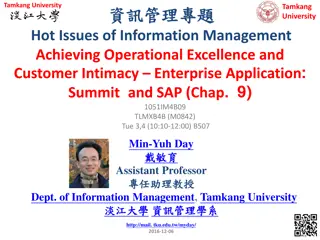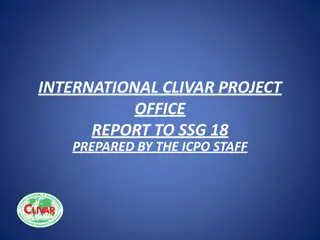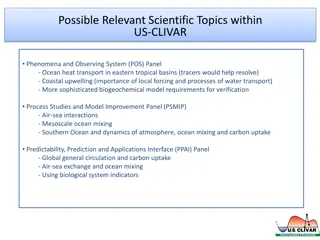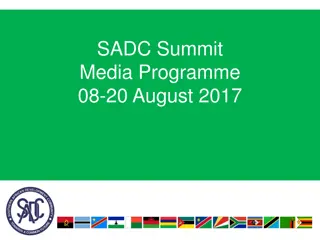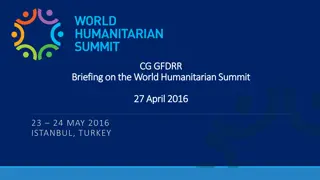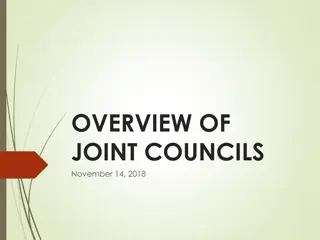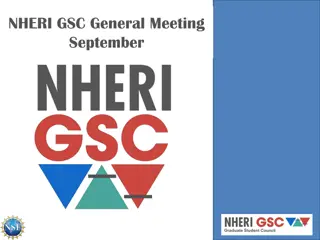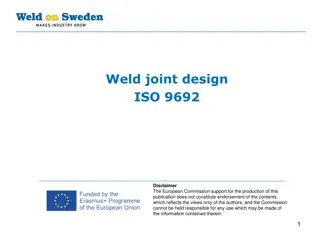Joint Meeting Summary: OCB US CLIVAR Summit 2011
A joint meeting was held in 2011 between OCB and US CLIVAR to explore common science issues and identify collaboration opportunities. The Ocean Carbon and Biogeochemistry Program, created in 2006 by NSF, NASA, and NOAA, focuses on understanding the ocean's role in the global carbon cycle. The meeting aimed to establish initial priority research topics for joint efforts in addressing environmental variability and change, particularly in areas like ocean acidification, carbon fluxes, and ecosystem impacts. The history of joint planning and the development of the meeting agenda were key components in achieving these objectives.
Download Presentation

Please find below an Image/Link to download the presentation.
The content on the website is provided AS IS for your information and personal use only. It may not be sold, licensed, or shared on other websites without obtaining consent from the author.If you encounter any issues during the download, it is possible that the publisher has removed the file from their server.
You are allowed to download the files provided on this website for personal or commercial use, subject to the condition that they are used lawfully. All files are the property of their respective owners.
The content on the website is provided AS IS for your information and personal use only. It may not be sold, licensed, or shared on other websites without obtaining consent from the author.
E N D
Presentation Transcript
General Overview and Suggested Outcomes of the Joint Meeting with OCB US CLIVAR Summit 2011 Woods Hole, MA July 18, 2011 Mike Patterson US CLIVAR Project Office mpatterson@usclivar.org
Ocean Carbon and Biogeochemistry Program Created in 2006 by NSF, NASA and NOAA Develops OCB research foci within the broader US Carbon Cycle Science Program Mission Study the evolving role of the ocean in the global carbon cycle, in the face of environmental variability and change through studies of marine biogeochemical cycles and associated ecosystems Science Themes: Improve understanding and prediction of Oceanic uptake and release of atmospheric CO2 and other greenhouse gases; Environmental sensitivities of biogeochemical cycles, marine ecosystems, and interactions between the two Current Priorities Ocean acidification Terrestrial/coastal carbon fluxes and exchanges Climate sensitivities of and change in ecosystem structure and associated impacts on biogeochemical cycles Mesopelagic ecological and biogeochemical interactions Benthic-pelagic feedbacks on biogeochemical cycles Ocean carbon uptake and storage Expanding low-oxygen conditions in the coastal and open oceans
A Brief History of Joint Planning US CLIVAR Summit 2010 Suggestion to explore possible 2011 Summit Theme focused on climate and ocean carbon OCB Summer Workshop 2010 (La Jolla, CA) David Legler presentation on US CLIVAR and linkages to OCB OCB expression of interest in Joint Meeting Draft US Carbon Cycle Science Plan Lisa Goddard and Mike Patterson offer US CLIVAR perspective Identify potential collaborative topics to address Joint Meeting Organizing Committee US CLIVAR and OCB Science Steering Committees each nominate four members of Joint Organizing Committee: Annalisa Bracco (Georgia Tech), Kenneth Johnson (MBARI), Nick Bond (UW), Craig Carlson (UCSB), Jay McCreary (U Hawaii), Dimitris Menemenlis (NASA JPL), Mak Saito (WHOI), Rik Wanninkhof (NOAA/AOML) Developed Joint Meeting agenda through telecon meetings and emails discussions from mid-March through early June
Objectives & Outcomes Meeting Objectives Explore science issues of common interest Identify initial priority research topics for collaboration between US CLIVAR and OCB researchers and programs over the next decade Potential Outcomes Summary of potential collaborative research topics, identifying near and long-term objectives Recommendations for potential focused meetings or workshop Encouragement of PI groups to form and generate working group prospectus proposals for submission in Fall for joint consideration by US CLIVAR and OCB Overriding Meeting Questions What can CLIVAR contribute to advance OCB research objectives? (e.g. observed and estimated changes in ocean circulation and heat content) What can OCB contribute to advance CLIVAR's? (e.g. tracers of ocean circulation, improved estimates of atmospheric concentration of carbon, methane and other carbon- based greenhouse gases via improved estimates of ocean release and uptake of carbon)
Motivating Science Questions How do changes in the physical ocean circulation and heat content affect the magnitudes and distributions of ocean carbon sources and sinks on seasonal to centennial time scales? What are the coupled physical/biogeochemical processes and feedbacks that contribute to determining the future state of heat and carbon sources and sinks and ecosystem structure? What will be the future atmospheric concentrations of carbon dioxide, methane, and other carbon-containing greenhouse gases, and how will marine carbon sources and sinks change in response to anthropogenic forcing in the future?
Joint Meeting Agenda 0800 0820 Meeting introduction, objectives, outcomes (Annalisa Bracco, Georgia Tech) 0820 0900 OCB and US CLIVAR: Scientific questions and global observing capabilities (Scott Doney, WHOI) 0900 0945 Joint OCB and US CLIVAR science and observing objectives (community discussion) 1015 1115 Global modeling challenges (30 mins. talk, 30 mins. community discussion) MIT) (Mick Follows, 1115 1215 Overturning circulation impacts on heat and carbon transport, ecosystem processes and anthropogenic carbon uptake in the ocean (Alison Macdonald, WHOI) 1345 1445 The interaction of climate, wind and sea ice on vertical mixing, ecosystem carbon uptake (e.g., Southern Ocean) (Nicole Lovenduski, Univ. Colorado) structure and 1445 1545 Coupled air-sea interaction, heat and gas exchange contributing to variability and ocean biogeochemistry (e.g. carbon sources and oxygen minimum zones) trends in (Curtis Deutsch, UCLA) 1615 1715 Sub-daily to seasonal and sub-mesoscale to mesoscale processes and interaction with biology (Amala Mahadevan, WHOI) ocean 1715 1730 Wrap up remarks 1730 1830 Poster session 1830 Workshop Dinner Self organizing collaborative research efforts
US CLIVAR Panel Considerations What are of US CLIVAR needs for ocean carbon and biogeochemical observations (e.g., chemical tracers) and OCB needs for physical climate and ocean observations (SST, dynamic height, radiation, precipitation, salinity, surface winds, ocean circulation, wave height)? Assessment of currently-supported (e.g., repeat hydrography, moored buoys remote sensing) and potential new opportunities for expanded (e.g., Argo floats) joint observational and data system efforts What are the research needs for understanding and modeling carbon cycle/climate system feedback processes and how can they be enabled through focused multi-disciplinary modeling projects? What is the potential of climate phenomena such as El Nino and droughts to impact carbon cycling? What can CLIVAR predictions and projections contribute to advance OCB research objectives and vice-versa? What is the role of climate in sources and sinks of carbon and how do projected changes in carbon impact climate? On what time and space scales should coupling occur of physical and biogeochemical components of Earth system models? What are the priority near-term opportunities for coordinated process Research?
US CLIVAR Panel Considerations What are the research needs for understanding and modeling carbon cycle/climate system feedback processes and how can they be enabled through focused multi-disciplinary modeling projects? What is the potential of climate phenomena such as El Nino and droughts to impact carbon cycling? What are the key potential climate and ocean changes that would impact marine ecosystems and carbon feedbacks: e.g., changes in ocean temperature, salinity and circulation and related impacts on ocean ecosystems (e.g. coral reefs and primary productivity), changes in precipitation and streamflow along with sea level rise impacts on coastal estuary, marsh and ocean shelf ecosystems. What can CLIVAR predictions and projections contribute to advance OCB research objectives and vice- versa? What is the role of climate in sources and sinks of carbon and how do projected changes in carbon impact climate? On what time and space scales should coupling occur of physical and biogeochemical components of Earth system models? What are the priority near-term opportunities for coordinated process research?
US CLIVAR Panel Considerations Are strategies for transitioning pilot monitoring and research-funded observations into sustained/operational status with requisite long-term funding and infrastructure support (e.g. shiptime) adequate? What can CLIVAR predictions and projections contribute to advance OCB research objectives and vice- versa? What is the role of climate in sources and sinks of carbon and how do projected changes in carbon impact climate? On what time and space scales should coupling occur of physical and biogeochemical components of Earth system models? How can CLIVAR assist OCB in interpreting the roles of current variability and uncertainties in projections to uncertainties in atmospheric carbon now and in the future? How does uncertainty due to climate variability and the uncertainties in changes in the mean climate (and possibly also changes in variability) affect uncertainties in time-varying estimates of CO2and CH4partitioning between land, ocean and atmosphere?


